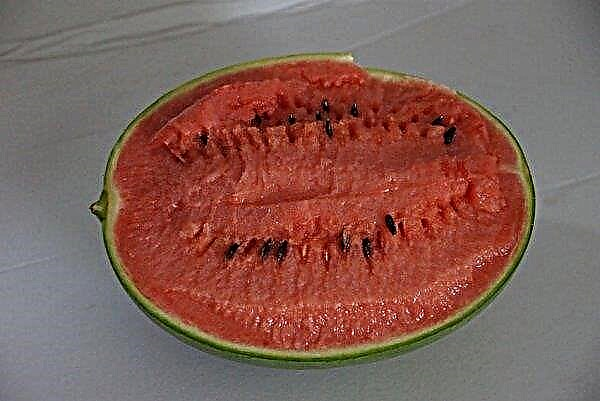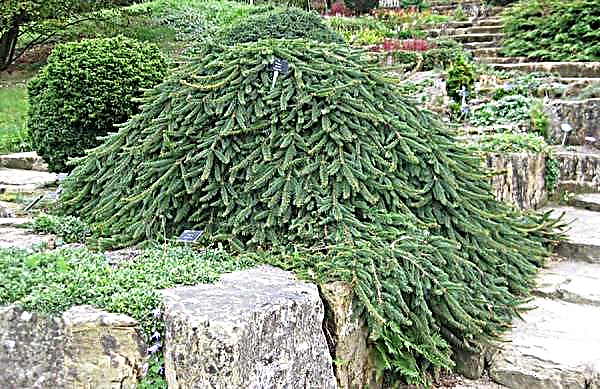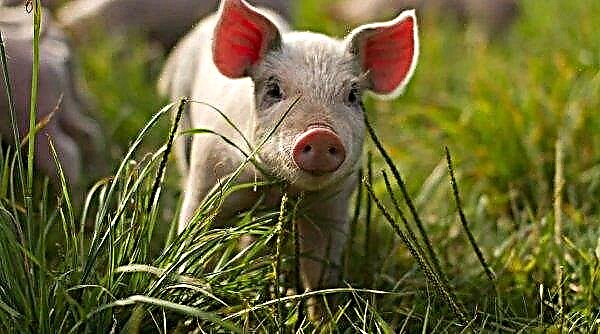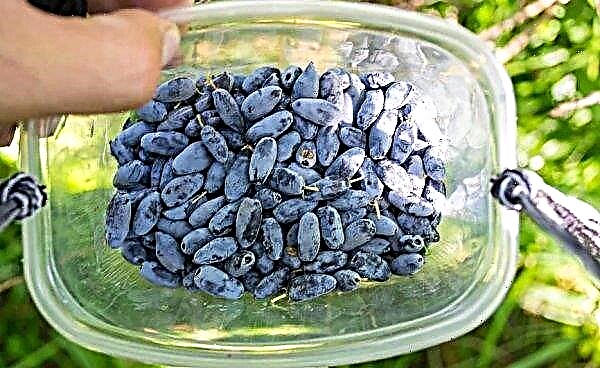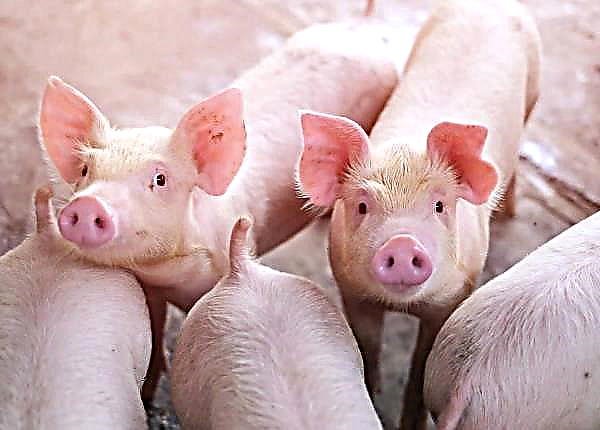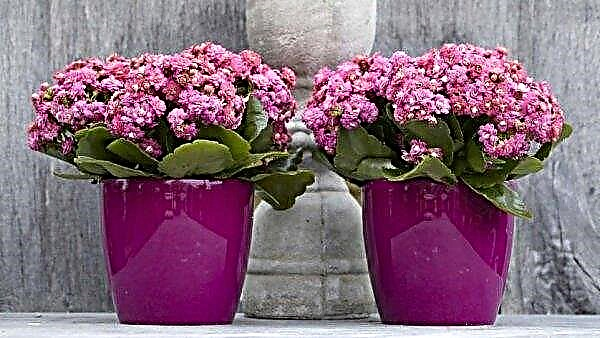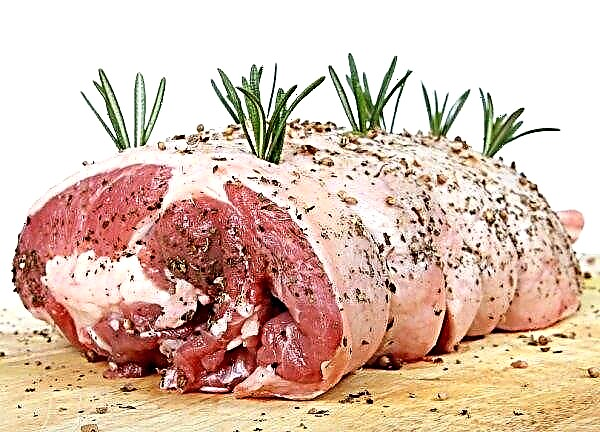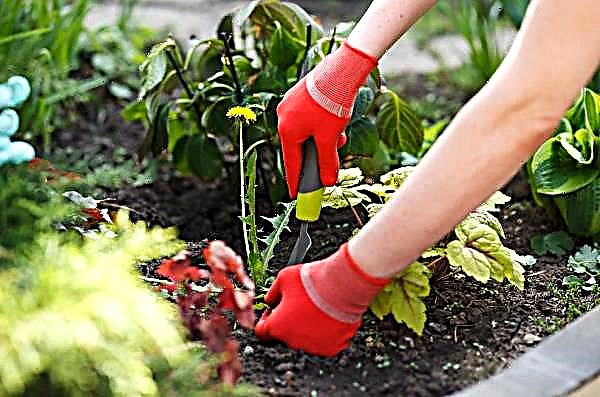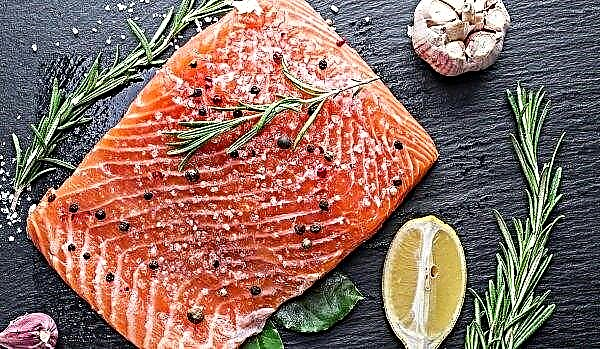Kibray is among the 20 best varieties of dill. He is considered the ancestor of the bush variety of this herbaceous plant. What other features of this culture and how to grow it in open ground, you will learn from the material.
Grade description
The Kibray variety was developed by specialists of the Russian Institute VNIISSOK. Received the name from the village of the same name in Uzbekistan. Green dill Kibray ripens in the middle. From the appearance of seedlings to harvesting greens, 40–45 days pass, to harvesting on spices - 60–70 days.
The plant forms large, semi-raised rosettes reaching a height of 30–40 cm, as well as large green leaves with a slight yellowness and a juicy stem. The taste of greens is high. She is tender, juicy, moderately spicy. From one plant you can collect up to 30 g of greenery.
Did you know? In the old days, dill was used only for decorative and medicinal purposes, and its smell was valued in the same way as the aroma of roses. The house was decorated with a plant, bouquets were made from it for loved ones. And the ancient masters of the word sang grass in verses.
Advantages and disadvantages
- Kibray variety has several advantages:
- differs in high productivity;
- has a large number of leaves;
- characterized by high commercial and taste;
- greens can be used for universal purposes;
- suitable for cultivation in open and protected ground;
- contains a large number of useful elements.
Kibray has no shortcomings.
Sowing seeds in open ground
In order to properly plant dill, it is necessary to select a suitable site for its cultivation and prepare the soil. Proper growth, development and a successful harvest will depend on adhering to the recommended timing and sowing technology.
The timing
Since dill is a cold-resistant plant, sowing of seeds can be carried out at a time when the earth warms up to only + 3 ° C, and the air temperature is set at + 8 ... + 10 ° C. In different regions, such parameters will be observed at different times. Usually a plant is planted in late May - early April, after the snow has melted.

Site selection
To cultivate the plant, you must select a site well lit by the sun. Avoid places where dolomite flour or lime had previously been applied to the soil. In such a land, dill will refuse to grow. Also, it will not bear fruit in the soil with a high level of acidity.
Dill can grow successfully after almost all crops. The best predecessors for it are cabbage, cucumbers, tomatoes, legumes. Also, this greens can be grown on a site that requires rest. After plants from the family of umbrellas, planting dill is undesirable.
Grass can be planted in separate beds or mixed plantings can be used by planting it in the aisles in areas with other crops. Best plant gets along with cabbage, cucumbers, potatoes. It improves the taste of the fruit and discourages planting caterpillars and aphids.
Bed preparation
Site preparation must be done in the autumn. It is thoroughly cleaned of plant residues, well digged on a shovel bayonet and fertilizer: a mixture of ammonium nitrate (15 g) with superphosphate (10 g) and potassium salt (10 g). For 1 m² of plot you will need 3 kg of the mixture.
Instead of mineral fertilizers, you can add organic matter. An excellent option is to feed the soil with humus (5 l / 1 m²), chicken droppings or mullein. Immediately before planting in spring, the soil is loosened and well moistened.
Seed preparation
In order for the seeds to sprout faster and better, they need to be prepared for sowing. Preparation consists of soaking in warm water. Seeds are placed in cheesecloth and dipped in hot water, heated to + 60 ° C, for a couple of minutes. Then they are placed in water at room temperature for 2 days. Every 8 hours, the water needs to be changed, and the seeds washed. After soaking, the seeds are dried in a dark place.
Important! Soaking seeds by soaking is carried out only during spring sowing. When planting in autumn and winter, this procedure is not performed.
Sowing pattern and depth
For sowing seeds, it is necessary to form furrows with a width of 5 cm and a depth of 2-3 cm. A distance of 25 cm should be observed between the furrows. After placing the seeds in the furrows, they are sprinkled with soil. Approximately 15 g of seeds are consumed per 1 m². After-planting irrigation is not carried out, since water can wash the seeds on the soil surface.

It is advisable to highlight a couple of rows and plant greenery on them 2 weeks later. So you can provide yourself with a harvest of fresh herbs for a long time. The first shoots should be expected 12-14 days after sowing. If the seeds have not been previously soaked, then they will sprout 1–1.5 weeks later.
Having planted dill at an air temperature of + 5 ° C, sprouts can be expected after 14-21 days. When planting in temperature conditions from + 15 ° C to + 20 ° C, the emergence period of seedlings is significantly reduced and amounts to 10-12 days.
After the mass emergence of seedlings, they will need to be thinned out, leaving a gap of 5 cm between the plants. At first, they must be shaded from the scorching sunlight, which can cause irreparable harm to young plants.
Important! Since dill does not respond well to sudden changes in temperature, the owner of the site after sowing must carefully monitor the weather forecast. If there is a chance of return frosts, the crops should be covered with a film.
Care Tips
Caring for dill is easy. Even a novice can handle this task. In order to get an abundant crop of greens, it is necessary to carry out activities such as moisturizing, fertilizing, cultivating and weeding.
Watering
So that the greens do not turn yellow prematurely and do not dry out, it must be regularly watered. The recommended frequency of watering is once every 2-3 days. Humidification is carried out in the evening. It is advisable to use warm water. It is poured under the root.

Top dressing
If in the autumn the soil was fertilized, then during the growing season dill is not required for additional nutrition. Fertilizing should be done only in exceptional cases: when yellowing leaves, early flowering. Such signs indicate a lack of nitrogen to the plant. When observing them, it is necessary to add urea (1 tsp. / 10 l of water).
Important! It is forbidden to feed dill with wood ash. Such top dressing provokes redness of the foliage and stunted growth.
Soil care
It is important to make timely soil care, namely loosening and weeding. Loosen the earth in order to improve its air and moisture conductivity and prevent the formation of a hard crust on the surface. Soil, which is not loosened, poorly conducts nutrients to the root system, which means that the plant does not eat enough.
Loosening is carried out after irrigation and precipitation at intervals of 2-3 weeks. Mandatory procedure is weed removal. It is necessary to start it as soon as shoots appear. Otherwise, weeds will shade dill and take away nutrients from it, which means that the spicy culture will grow poorly and develop incorrectly.
Harvest
Harvesting dill on greens is started 1.5 months after planting, when the plant reaches a height of 15–20 cm. The green foliage is torn manually. Before harvesting, it is advisable to spray dill.

To prepare seasoning, the grass is harvested at the age of 2–2.5 months after flowering. At this time, the plant grows to 1 m. Seeds are harvested in the fall, after harvesting the umbrellas. Kibray dill greens can be consumed fresh, dried and frozen for long-term preservation.
When drying and freezing the plant loses a minimum of valuable substances. Fresh dill can be stored in the refrigerator for a month, in frozen - until the next harvest, in dry - for 2 years. Freshly prepared dishes are seasoned with dill to saturate with exquisite taste and aroma. It is added to preservation, put in marinades.
So, to grow one of the best varieties of dill Kibray, it will not take much effort. It is enough to regularly moisten and loosen the soil, periodically apply fertilizers, and the plant will give the owner an abundant harvest of delicious, fragrant greens.Did you know? The Romans used dill to make wreaths that awarded the best scholars.

